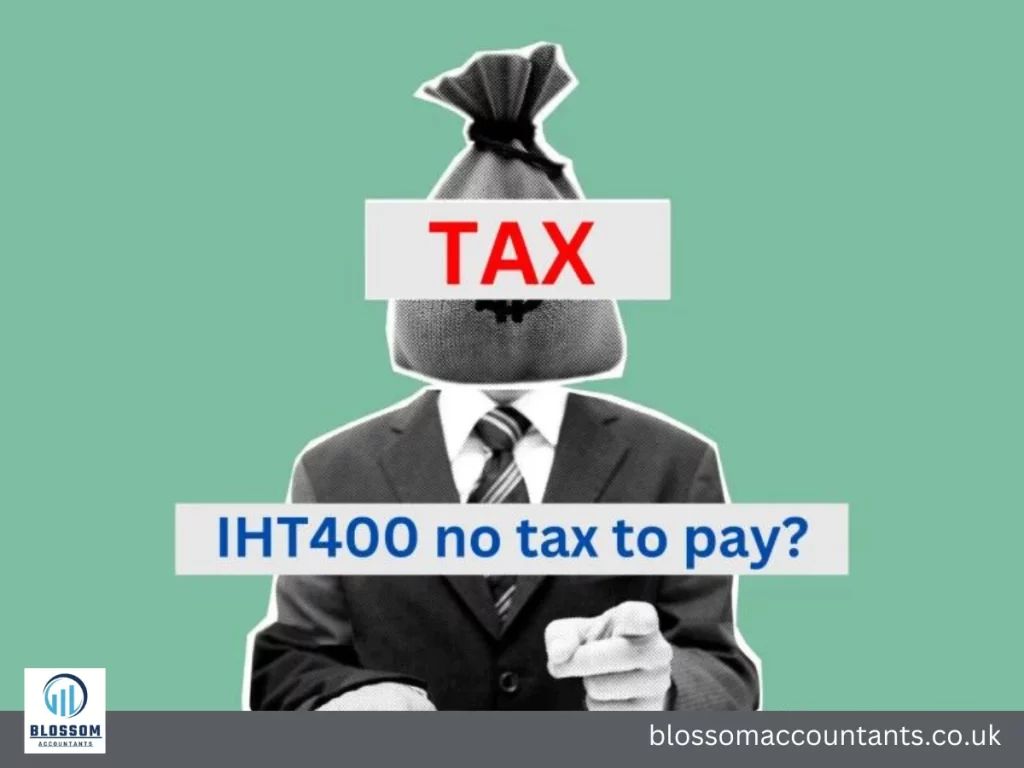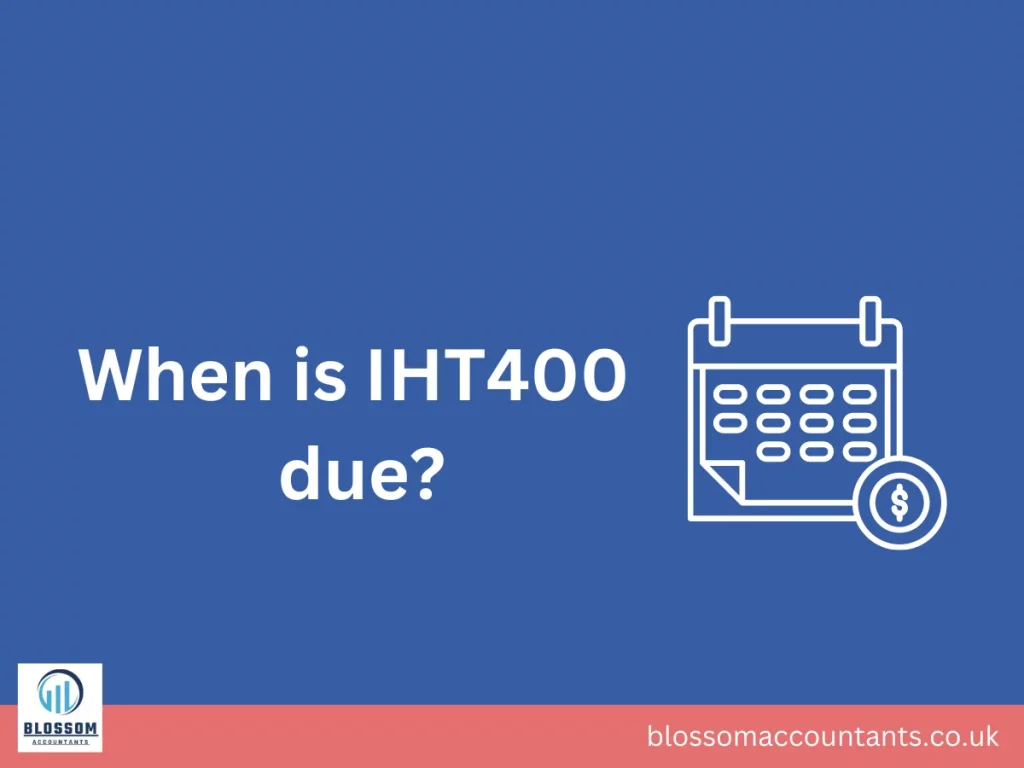IHT400 is the form used in the United Kingdom (UK) to report inheritance tax. It is also known as the Inheritance Tax Account in UK. The IHT400 form is used to provide details of the estate of a person who passed away, the assets and liabilities that make up the estate, and any inheritance tax due.
The IHT400 form is used by the executor or administrator of the deceased’s estate to report the value of the estate to Her Majesty’s Revenue and Customs (HMRC). The form must be completed within 12 months of the end of the month in which the deceased person passed away. If the estate is complicated, it may be necessary to seek professional advice from a solicitor or accountant to ensure that the form is completed accurately.
The form requires detailed information about the deceased person’s assets, including property, investments, and personal possessions. It also requires information about any liabilities or debts owed by the deceased, as these will be deducted from the value of the estate when calculating inheritance tax.
After completing the IHT400 form, it must be submitted along with supporting documents such as: B. Valuation of real estate and assets submitted to HMRC. HMRC will then carry out an assessment of the estate and determine whether inheritance tax is due. If taxes are due, they must be paid before the estate is distributed to the beneficiaries.
In the United Kingdom (UK) an estate’s inheritance tax liability due is reported to HM Revenue and Customs (HMRC) using the IHT400 form. Read below for more details on iht400 form and why it is important to submit it to HMRC.
Refer to questions below on IHT400 tax:
Table of Contents
What is IHT400 form?
IHT400 is a form used to report an estate’s inheritance tax liability to HM Revenue and Customs (HMRC). It is used when the estate’s value exceeds the inheritance tax threshold or when certain exemptions and reliefs cannot be claimed on the simpler IHT205 form.

Why inheritance tax?
The objective of HMRC is to reduce the inequality of wealth in UK and help in supporting public services. Due to this HMRC levied the inheritance tax to the beneficiaries of the person who died. This can be done through IHT400 form (Inheritance Tax Form) which will have all the financial details of the person who died like assets and liabilities.
What is iht400 used for?
IHT400 form is used to report an estate’s inheritance tax liability to HM Revenue and Customs (HMRC) when the estate’s value exceeds the inheritance tax threshold or when certain exemptions and reliefs cannot be claimed on the simpler IHT205 form.
Which iht form should I use?
You should use the IHT205 form if the estate’s value is below the inheritance tax threshold or if the estate qualifies for certain exemptions and reliefs. You should use the IHT400 form if the estate’s value exceeds the threshold or if certain exemptions and reliefs cannot be claimed.
Where to send IHT400 form?
Send it to HMRC postal address given on the IHT400 form along with all the supporting documents. HMRC will calculate the tax based on the form and documents attached.
Can it be submitted online or how to submit iht400 online?
No, IHT400 cannot be submitted to HMRC online. You must complete the form and return it to HMRC.
Also read: CT61 form

How to download iht400 form in pdf format?
You can download IHT400 form in pdf format from HM Revenue and Customs (HMRC) website.
Can IHT400 be signed electronically?
No, IHT400 cannot be signed electronically. The executor or administrator must sign the document by hand.
Can I see iht400 notes for guidance?
Here is the link of IHT400 advice notes on HMRC website
What is the deadline for iht400?
The IHT400 form must be submitted six months following the end of the month in which the deceased died.
IHT400 no tax to pay?
If the executor or administrator of the estate calculated that there is no inheritance tax due then you can use IHT421 form (which is a simplified version of the IHT400 form) to submit it to HMRC.

Is there any helpline for IHT400?
Yes, there is a helpline for IHT400. You can contact the HMRC Inheritance Tax helpline for assistance with completing the form or for general inheritance tax enquiries.
What IHT400 band rates?
IHT400 tax rates are 0% for the first £325,000, 40% on the portion of the estate above £325,000
Do I get iht400 reference number?
Yes, you will receive an IHT400 reference number once the form has been processed by HM Revenue and Customs (HMRC).
Can you fill iHT400 online?
No, IHT400 cannot be completed online.
When is IHT400 due?
Within 6 months after the deceased’s death, the IHT400 form must be completed and sent to HMRC.
Also read: Capital Gains Tax UK

Can I complete IHT400 form online?
No, you cannot submit IHT400 online. It must be submitted manually.
IHT400 when to use?
IHT400 form should be used when the estate’s value exceeds the inheritance tax threshold or when certain exemptions and reliefs cannot be claimed on the simpler IHT205 form.
When is form IHT400 required?
IHT400 form is required when the estate’s value exceeds the inheritance tax threshold or when certain exemptions and reliefs cannot be claimed on the simpler IHT205 form.
When to file IHT400?
The IHT400 form must be submitted to HMRC within six months after the end of the month in which the deceased passed away.
When to complete an IHT400?
HM Revenue and Customs (HMRC) must receive the IHT400 form within six months of the end of the month in which the deceased passed away, however, it should be completed as soon as practicable following the person’s death.
When is IHT400 required?
IHT400 form is required when the estate’s value exceeds the inheritance tax threshold or when certain exemptions and reliefs cannot be claimed on the simpler IHT205 form.
How long does it take to process?
The processing time for an IHT400 form can vary depending on the complexity of the estate and the workload of HM Revenue and Customs (HMRC). Processing times take many weeks or months by HMRC it is preferable to give time.
Who signs the IHT400?
Executor or administrator of the estate sign the IHT400 form
Do I need to send IHT421 with IHT400?
If there is no inheritance tax to pay, the executor or administrator of the estate can use the IHT421 form, which is a simplified version of the IHT400 form. Instead of the whole IHT400 form, this should be filed.
What is the difference between IHT205 and IHT400?
The IHT205 form is a simplified form that is used for estates that are less than the inheritance tax threshold or qualify for specific exclusions and reliefs. The IHT400 form is a more complicated form that is used for estates that exceed the threshold or are ineligible for certain exemptions and reliefs.
What happens after IHT400 form submitted?
After being delivered to HM Revenue and Customs (HMRC), the IHT400 form will be examined and evaluated in order to compute the inheritance tax. Before the estate may be distributed to the beneficiaries, the executor or administrator must satisfy any outstanding inheritance tax liabilities with HMRC.
What is IHT400 with reservations?
IHT400 with reservations represents a situation in which a person has gifted an asset but holds or retains some benefit or control of an asset. In this situation, the value of the gift (asset) may still be liable to inheritance tax after the person passes away.
What documents to send with IHT400 form?
The papers required with IHT400 are determined by the complexity of the estate. A separate set of paperwork is required with IHT400 dependent on the estate’s complexity. In general, you should include a copy of the deceased’s will, a summary of their assets and liabilities (if any), and any relevant assessments or evaluations. To ensure that all essential papers are included, it is important to check the IHT400 notes for help or seek professional advice.
What are the IHT400 rates and tables?
There is no specific rate or table associated with the IHT400 form. The IHT400 form is the Inheritance Tax account form used in the United Kingdom for reporting and paying inheritance tax.
What is IHT435 form?
The IHT435 form is used to report additional information about assets qualifying for relief or exemption from inheritance tax, such as agricultural property relief or business property relief.
What is IHT421 form?
IHT421 form: The IHT421 form is the probate application form. It is used to apply for a grant of representation (probate or letters of administration) after someone has died. This form provides details about the deceased person, the estate, and the intended executor or administrator.
What is IHT401 form?
IHT401 form: The IHT401 form is used to report the value of gifts and transfers made by the deceased person within seven years before their death. This form helps determine if any inheritance tax is payable on those gifts or not.
What is IHT404 form?
IHT404 form: This form is used to report any property given away by the deceased and retained for their benefit, resulting in a reservation of benefit. It helps determine if the gift with reservation of benefit rules apply and if inheritance tax is payable.
What is IHT403 form?
IHT403 form: The IHT403 form is used to report gifts and transfers made by the deceased more than seven years before their death but are still relevant for inheritance tax purposes, such as potentially exempt transfers.
What is IHT406 form?
IHT406 form: This form is used to report any trusts the deceased person has an interest in or has set up during their lifetime. It provides details about the trust assets and helps determine any inheritance tax implications.
What is IHT402 form?
IHT402 form: The IHT402 form is used to report any chargeable transfers made by the deceased person into certain types of trusts during their lifetime. It provides details about the trust assets and helps determine any inheritance tax implications.
What is IHT435 form?
IHT435 form: The IHT435 form is used to report additional information about assets qualifying for relief or exemption from inheritance tax, such as agricultural property relief or business property relief.
What is IHT421 form?
IHT421 form: The IHT421 form is the probate application form. It is used to apply for a grant of representation (probate or letters of administration) after someone has died. This form provides details about the deceased person, the estate, and the intended executor or administrator.
What is probate application?
Probate application:
Probate is the legal process of administering the estate of a deceased person. It involves applying for a grant of representation, which gives the executor or administrator the authority to handle the deceased person’s assets, pay debts, and distribute the estate according to the will or intestacy laws.
How to apply for probate?
To apply for probate in the UK, you generally need to follow these steps:
Gather necessary information: Collect all the relevant information about the deceased person’s assets, liabilities, and beneficiaries.
Complete the probate application form (IHT421): Fill out the IHT421 form, providing details about the deceased, the estate, and the chosen executor or administrator.
Gather supporting documents: Gather supporting documents such as the original will, death certificate, and any other relevant paperwork.
Pay the application fee: Pay the required probate application fee, which can be done online or through the post office.
Submit the application: Send the completed probate application form, supporting documents, and payment to the Probate Registry.
Await grant of representation: Once the application is submitted, you will need to wait for the grant of representation to be issued. This process can take several weeks or months.
How to calculate IHT400?
The IHT400 form is used to report and calculate the inheritance tax liability on an estate. The calculation involves determining the value of the estate, applying any applicable exemptions and reliefs, and then calculating the inheritance tax due based on the current tax rates.
Calculating the IHT400 involves several factors and can be complex. It is generally recommended to seek professional advice or consult HMRC’s guidance on inheritance tax calculations. The calculation takes into account various assets, liabilities, exemptions, and reliefs specific to the estate.
Any example of IHT400 calculation?
Example of IHT400 calculation:
Calculating the IHT400 requires detailed information about the estate. Here’s a simplified example of an IHT400 calculation:
Value of the estate: £1,500,000
Deductible liabilities: £200,000
Exempt assets (e.g., assets passed to a spouse or charity): £500,000
Nil-rate band threshold (2023/2024): £325,000
Residence nil-rate band threshold (if applicable): £175,000
Calculation:
1) Total taxable value of the estate: £1,500,000 – £200,000 – £500,000 = £800,000
2) Apply nil-rate band: £800,000 – £325,000 = £475,000 (taxable estate after nil-rate band)
3) Apply residence nil-rate band (if applicable): £475,000 – £175,000 = £300,000 (taxable estate after both nil-rate bands)
4) Calculate inheritance tax on taxable estate: £300,000 x 40% = £120,000 (inheritance tax liability)
Please note that this is a simplified example for illustrative purposes. The actual IHT400 calculation may involve additional factors and specific exemptions or reliefs applicable to the estate.
DISCLAIMER: We have written the UK accounting and tax related details for your information only. For professional advice or for any accounting task you require, you may need to speak to a professional accountant near you who can assist you. Please read our disclaimer for more details.

